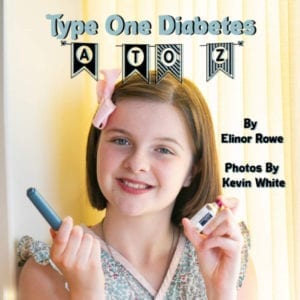25 Aug Creating and Communicating Your Child’s 504 Plan (Updated for COVID)
Chuck Berry is singing, “Up in the mornin’ and out to school,” and (back to) school days are here. We’re shelving our pool bag and loading a new backpack with school and diabetic supplies.
There are always plans and precautions in place for kids with type one diabetes (T1D). The return to classrooms is even more fraught as the pandemic disrupts a third school year. We are praying for a safe, successful year whether you’re in person, online, or hybrid.
After distance learning for a year and getting vaccinated at the first opportunity, Ellie returned to seated classes with a 504 plan in place. We discussed and included accommodations related to COVID.
Here’s a quick look at creating, communicating, and amending a 504 plan for the pandemic. Each child, school, district, and state will be different. This is what we put in place for Ellie with the understanding that we may need to review and revise as circumstances change. (Please let our local case numbers come down and vaccination rates increase.) I’ve also rounded up additional resources from trusted medical experts and diabetes advocates.
The plan will grow with your child’s ability to self-manage diabetes, but it’s still essential to cover day-to-day situations as well as the appropriate emergency response.
What is a 504 plan?
A 504 plan is a document used in schools to ensure that children with diabetes receive accommodations based on their unique health needs. In essence, this plan helps students, parents, and educators work as a team to afford a child with diabetes the same opportunities as fellow students.
Section 504 of the Rehabilitation Act of 1973 states that people with diabetes cannot be discriminated against because of their medical condition. Both the Juvenile Diabetes Research Foundation (JDRF) and the American Diabetes Association (ADA) have sample 504 plans online that can be models as you develop one in conjunction with your school. (Links below.)
Students’ legal protections under state and federal laws do not disappear or diminish with the pandemic. Accommodations may look a little different, but legal rights don’t go away.
How do you start creating your 504? (Twelve step plan for getting started!)
- Assess needs, plan who will provide care and treatment, and coordinate services.
- Determine and communicate student’s level of self-care.
- Create, pack, and list supplies; designate what the student will carry and location(s) of extra supplies.
- Plan for snacks and meals as well as exercise.
- Address water and bathroom access.
- Cover (in-depth!) checking blood glucose levels, administering insulin and medication, and treating high or low blood glucose levels.
- Include field trips, playground, extracurricular activities, and before/after school care.
- Request modifications to timed tests and classroom work.
Please note: Accommodations for diabetes care during standardized tests at school should be made. SAT and ACT offer accommodations, too. Seek this information early as you must document the disability.
- Establish a clear line of communication so that you know how to address issues and changes.
- Create a comprehensive emergency care plan, allowing for building evacuation and shelter-in-place orders.
- Provide concrete directions for when to notify parents such as:
- Symptoms of severe low blood sugar. * Call 911 first for unconsciousness, administer glucagon/contact nurse, and then follow up with parents.
- Student’s blood glucose results are above _______ or below_______.
- Symptoms of high blood sugar.
- Student doesn’t eat or take insulin injection/ bolus.
- Insulin pump malfunction.
- Injury or illness.
- List all emergency contacts (with all possible contact methods and current numbers) and the student’s health care provider.
What else should you do?
- Put it in writing. Teachers, a nurse, or principal may leave in the course of a school year.
- Outline roles and responsibilities. Ellie joined the meeting to review her plan so that she would understand what was expected of her such as testing times, reporting any lows or highs to the classroom teacher, etc. (See #2.)
- Communicate clearly and update as needed. Discuss where extra supplies will be stored, who will be the primary contact at the school if there is not a nurse, how safety measures and emergency precautions such as administering glucagon will be communicated to all staff (including specialty teachers who may see the student once a week but still need to know protocols), and how the plan will change when staff is out and substitutes are covering.
The plan will grow with your child’s ability to self-manage diabetes, but it’s still essential to cover day-to-day situations as well as the appropriate emergency response.
How do you adapt your 504 plan for COVID?
Discuss your school’s current COVID safety measures. If, like Ellie, your child is in a school in which the majority of students are under age 12 and are not (yet) eligible for the COVID vaccine, discuss masking. Your child’s 504 can’t dictate the actions of other students, but the individual plan can provide direction and include concrete directives for your own child to stay safer. Ellie knows there are times when other students remove their masks that she wears hers. She double masks in tighter spaces where physical distancing isn’t possible. We searched for masks that cover both nose and mouth, have two layers of breathable fabric, and fit snugly.
As a family, we discussed that, for us, wearing a mask isn’t about surrendering liberties so much as showing love and caring for each other. The pandemic can teach us new ways to take care of ourselves, people around us, and our community and to be part of a solution forward.
With school officials, we discussed increasing physical distance in the classroom setting, air purification systems, and the lunch plan (eating in the classroom, instead of cafeteria, with a significantly smaller number of students and the ability to space apart).
Click for JDRF’s fact sheet and info on back to school & COVID.
Kids with diabetes are accustomed to calculating risk and making decisions to minimize it. With a new COVID variant and fluctuating conditions by community, we are all becoming skilled in assessing risk in real-time. Most of my life, experts have done the hard work of calculating risk for me ahead of time so that I know how much weight a crowded elevator will take, why I should buckle my seatbelt, or what my dosage of an over-the-counter medicine should be. With COVID, we’re constantly evaluating circumstances, weighing risk, seeking expert advice from trusted sources, and allowing for our individual experience and health conditions. COVID is new and changing, but as a family with T1D, we are relatively used to evaluating risks, planning ahead, and making decisions with the best info available at the time. It’s part of our management repertoire and can serve us well in these unusual times.
It’s often said we’re living through an unprecedented global crisis, and like everyone, we’re more than ready for some precedented times! Stay safe and well. We’re praying for a safe start to a successful school year and sharing additional resources to aid in that effort. We’re all in this together.



